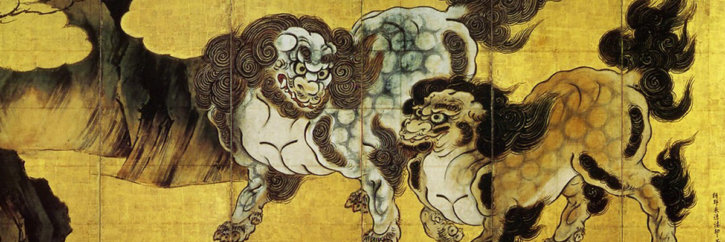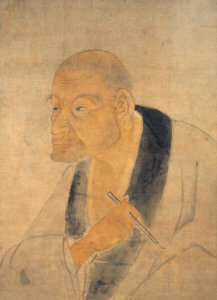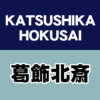How Did Japan’s Largest Artist Collective, the Kanō School Survive the Threat of Extinction!?

The Kanō School’s Biggest Crisis
From the end of the Muromachi period to the end of the Edo period, for around 400 years, was the strongest and largest artist collective that always ran in the center of the art world — the Kanō school.
The founder, Kanō Masanobu, played an active part as the official artist of the Muromachi Shogunate, and Kanō Motonobu, the second generation, had many apprentices and established a workshop system that could meet the demands of a wide range of customers. Additionally, Motonobu’s grandchild, Kanō Eitoku (狩野永徳), was favored by rulers such as Oda Nobunaga and Toyotomi Hideyoshi, making him a star of the times.

However, tragedy fell upon what seemed to be the smooth sailing Kanō school. It was the sudden death of its master, Kanō Eitoku (狩野永徳). In the midst of troubled times when the future was uncertain, not only samurai, but artists also had to engage themselves in extremely fierce tactics for survival. Especially for the Kanō school, which had been closely involved with those in power, the turmoil caused by the death of the clan’s backbone, Eitoku, was enormous.
An incident occured, adding a further blow to the situation. The Kanō school, which received Toyotomi Hideyoshi’s generous patronage and was entrusted with most of the paintings, was robbed of their work from Hideyoshi by, of all people, their biggest rival, Hasegawa Tōhaku. Nothing could have been more humiliating for Eitoku’s eldest son, Kanō Mitsunobu, who had only just become the master.
It was the toughest time for the Kanō school, and a turbulent era as they had to determine who the ruler would be in the new era, for the sake of the clan’s survival. Now, what kind of secret methods did the Kanō school launch themselves into?
The Three Sides Strategy: the Kanō School’s Big Survival Tactic
With the Sekigahara battle as the turning point, the trends of society completely changed in the second half of the Momoyama period. The three-way struggle of power composed by the Toyotomi clan, the Tokugawa clan, and the Imperial Court also became the basis of the Kanō school’s survival tactics. It is the so-called ‘Three Sides Strategy.’
In other words, Kanō Eitoku’s apprentices, Kanō Sanraku and Kanō Naizen (both who were artists from families of samurai, whose talents were discovered by Hideyoshi,) served the Toyotomi clan, while Eitoku’s brother, Kanō Naganobu, who was 34 years Eitoku’s junior, served Tokugawa Ieyasu and Hidetada from the early stages, and later on, Kanō Tan-yū played a leading role in the Kanō clan achieving the title as the Edo Shogunate’s favorite artist. Kanō Takanobu was placed to serve the Imperial Court — he was a younger brother of Mitsunobu, and the father of three brothers, Kanō Tan-yū, Kanō Naonobu, and Kanō Eishin Yasunobu, who was well-trusted by the Emperor as an artist for the Imperial Court .

Thus, in this period of political instability, the Kanō school established a system that could ensure their survival through any unforeseen circumstance, and this became the cornerstone of the Kanō school’s prosperity until the end of the Bakumatsu period (1853-1869). It can be said that this was a secret method unique to the Kanō school, who honored their lineage and had influential apprentices.








